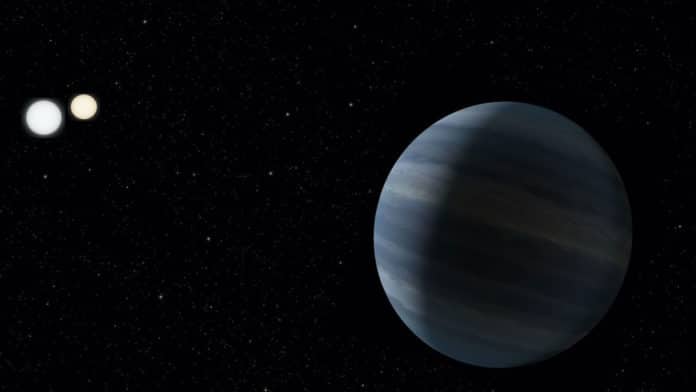Until now, NASA’s TESS space telescope has discovered more than 150 confirmed exoplanets. Using data from it, an international science team led by Veselin B. Kostov of NASA’s Goddard Space Flight Center found the transiting circumbinary planet, TIC 172900988 b. This giant planet is as big as Jupiter and orbits two stars.
When observed from earth, the planet was found to cross the face of both the stars. Another interesting fact is it makes a total of three eclipses while the planet traced its way across one star and then, a few days later, across the other.
Planets that orbit two stars are known as circumbinary planets as they orbit binary stars. This newly discovered planet is a gas giant with the size of our own Jupiter, though far more massive.
Unlike other discoveries of circumbinary, this discovery is quite exceptional. Its year, once around the two stars, takes about 200 days.
Figuring out the system’s dynamics typically takes 200 days, for example, to see another transit and confirm the planet’s orbital period. TESS makes its observations sector by sector; in this case, the scientists had only 30 days of observations of the circumbinary planetary system before TESS moved on to another patch of sky.
The three eclipses could be observed as part of the 20-day orbit of the stars around each other. Scientists also observed a five-day gap between the planet’s transit of the first star and the second one.
High-resolution imaging in the near-infrared part of the light spectrum revealed the possible third star in this system. As suggested, the star must have a very long orbit of around 5,000 years. Whats’s more, the star has a low- mass and orbits both stars and the newly discovered planet.
